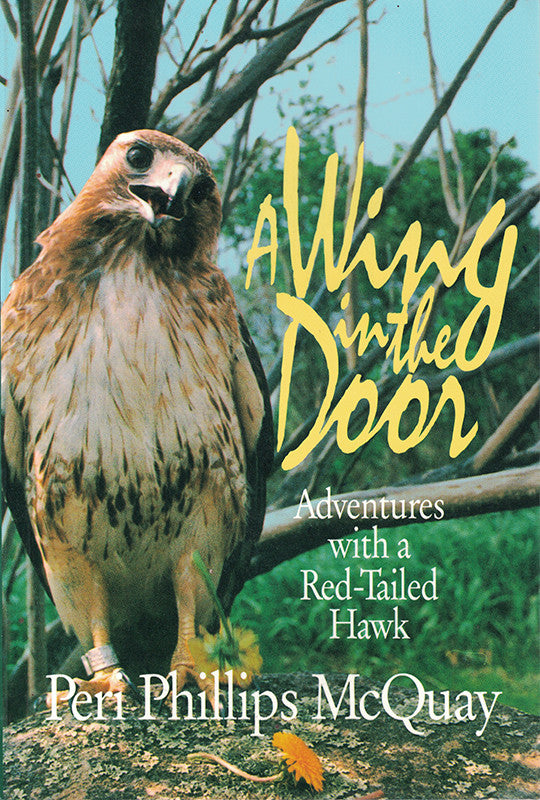

A Wing in the Door: adventures with a Red-tailed Hawk
Details
By: Peri Phillips McQuay
ISBN: 0888821638 / 9780888821638
Binding: Trade Paper
Size: 9" X 6"
Pages: 206
Photos:
Illustrations:
Publication Date: 1993
Description
Illegally plucked from her nest when only a month old to be trained for falconry, Merak, a Red-tailed Hawk, is two when finally released. She isn’t used to foraging for herself, however, and wanders into a nearby town. As Peri McQuay quickly learns, this human-imprinted hawk is not quite ready for the wild. As Merak’s caretakers, the McQuays try to coax the bird to independence. In journal form, Peri McQuay writes about her life with Merak, relating the hawk’s antics — chasing a garden hose that looks like a snake, rearing up to magnificent size to threaten a house cat — and her difficulties. McQuay becomes increasingly attached even as she hopes that Merak will become fully wild again. This unusual book about a little-known topic testifies to the powerful connections between humans and animals.
Author Biography
Book Reviews
At home from Panama to the Arctic, red-tailed hawks are a common sight in the skies of North America. But because red-tails are understandably shy of humans, they are usually a distant sight, and few people get the opportunity to observe the raptors up close for more than a fleeting second.
Peri McQuay, a Canadian writer and naturalist, is one of those few. Called on to help raise a young red-tail that had been taken from the wild early and trained--but only partly--by a would-be falconer, she embarked upon what she clearly considers to be the adventure of a lifetime. Warned that Merak, the young bird, might have imprinted on humans and therefore likely could not fend for herself, McQuay spent the next several seasons encouraging Merak to find a home for herself in the world to which she belonged, probing the depths of raptor psychology in an attempt to help Merak learn to hunt, find a mate, and return to the wild state that was her birthright.
The experiment, as McQuay writes in this thoughtful memoir, had mixed results. Her portrait of Merak is sympathetic, affectionate, and full of surprises (among them the humorous revelation that a bird of prey and a cat can arrive at an accommodation, and even live in peace), if tinged with sorrow for what has become of so much of the wild. McQuay's affecting tale of "the gift of this pitiably damaged yet magnificent hawk" will inspire any student of wild birds. --Gregory McNamee